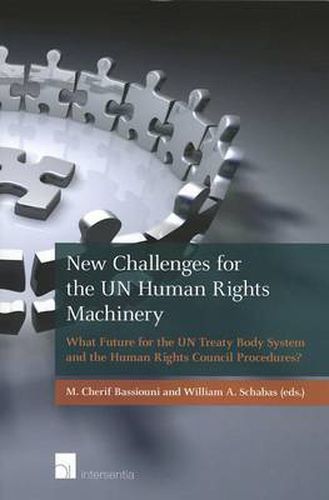New Challenges for the UN Human Rights Machinery: What Future for the UN Treaty Body System and the Human Rights Council Procedures?

New Challenges for the UN Human Rights Machinery: What Future for the UN Treaty Body System and the Human Rights Council Procedures?
With a foreword by Ms. Navi Pillay United Nations High Commissioner for Human Rights With the growth of the Treaty Body System, harmonization and coordination of working methods between the treaty bodies became a pressing issue. Commentators spoke of a crisis of the system - victim of its own success. In 2002 the UN Secretary-General (‘An agenda for future’) considered that the development of the system, among others, increased pressure on resources of both States and the secretariat and had implication on the ability of the States to continue to meet their reporting obligations, while the secretariat struggled to continue to provide quality service to all treaty bodies. The UN invited States to reflect on a number of reform initiatives that could help to modernize the system. The possibility of replacing the reporting obligations owed to each of the treaty bodies, with a single report was suggested. The UN also wished that strengthening and harmonization efforts could eventually lead to a single human rights Treaty Body, which was hoped, could enhance human rights protection at national level. These suggestions were largely unacceptable to States parties, but the concept itself of having States submitting single reports to a single human rights mechanism was tried in the new Charter-based Universal Periodic Review mechanism of the new Human Rights Council set up in 2007. While the new procedure had little impact on the challenges to the separate Treaty Body System which continued to grow, increasing the need for its modernization; it certainly reinvigorated calls for a better coordination between the different elements of the UN Human Rights Machinery to avoid duplication of efforts that strains resources and lessens impact on the real situation of the rights holders at the national level. This prompted the UN High Commissioner for Human Rights Navi Pillay, in 2009, to give a new impetus to the discussions started almost a decade ago, by addressing a renewed call on relevant stakeholders (States, Treaty Body members, national human rights institutions, non-governmental organizations and academic entities) to initiate a process of reflection on ways of strengthening the Treaty Body System and by extension the UN Human Rights Protection System as a whole. This impressive collection of essays is a response to the High Commissioner’s call, which joins initiatives by other stakeholders, from an academic perspective. The book has two parts: one presents reflections on the Treaty Body System and the second on the Human Rights Council Procedures. Authors are established scholars and practitioners in the field of human rights, many of whom are Treaty Body members or mandate holders of varied Human Rights Council Procedures.
This item is not currently in-stock. It can be ordered online and is expected to ship in approx 4 weeks
Our stock data is updated periodically, and availability may change throughout the day for in-demand items. Please call the relevant shop for the most current stock information. Prices are subject to change without notice.
Sign in or become a Readings Member to add this title to a wishlist.


